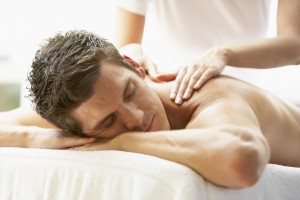When it comes to health, you’re proactive. You don’t smoke cigarettes, you exercise and you even steer clear of cleaning products containing harsh chemicals. But, have you taken a look inside of your cosmetic bag? The laws regulating the ingredients that can be used in makeup and personal care products are more like loose guidelines. It’s up to you to be an informed consumer or beauty professional.
Find out exactly what you’re primping, priming and preening with. Environmentalist and author, Adria Vasil, gives us a list of ingredients to avoid when it comes to cosmetic and personal care products.
Here are the top 10 culprits, their crimes, and their aliases:
Culprit #1: Diethanolamine (DEA). Commonly found in bubbling, foaming and fizzing products like shampoos, soaps and body wash.
Crime: Suspected carcinogen. Repeated use has been linked to increased cases of kidney and liver cancer.
Alias: Look for names like Cocamide DEA or MEA, Lauramide DEA.
Culprit #2: Formaldehyde. Found in many brands of skin, hair and body care products, antiperspirants and nail polish.
Crime: Known carcinogen. Besides increasing your risks of getting cancer, exposure may cause joint pain, allergies, depression, headaches, chest pains, ear infections, chronic fatigue, dizziness, loss of sleep and more.
Alias: Look for names like DMDM hydantoin, Imidazolidinyl urea and quaternium-15
Culprit #3: Parabens. Found in shampoos, conditioners, skin creams and deodorants.
Crime: Endocrine-disruptors. Parabens mimic female hormones and have been found in breast cancer tumor samples.
Alias: Look for the word “paraben” or any other word with the suffix “-paraben”, including methylparaben, ethylparaben, isobutylparaben, propylparaben, etc.
Culprit #4: Petrolatum. Commonly found in lip products.
Crime: Interferes with skin’s natural cell development and can cause chapping, irritation and premature aging This substance is derived from a non-renewable crude oil, which people aren’t even supposed to breathe. Mineral oil is also petroleum-based.
Culprit #5: Phenyledediamine (PPD). Found in permanent hair dyes – especially darker shades.
Crime: Suspected Carcinogen. Frequent use has been linked to bladder cancer.
Alias: Also called P-diaminobenzene.
Culprit #6: Phthalates. Found in deodorants, shampoos, sunscreens, skin care body care and baby products.
Crime: Hormone disrupting chemicals. Many of the compounds that fall into the “fragrance” category are suspected carcinogens and toxins. Reported symptoms have included headaches, dizziness, rashes, skin discoloration, violent coughing and vomiting, allergic skin irritation and more.
Alias: Often listed as an ingredient called “fragrance.”
Culprit #7: Sodium lauryl/laureth sulfate (SLS) (SLES). Found in detergents, car wash soaps, garage floor cleaners and engine degreasers. And, also in cosmetics, toothpaste, hair conditioner and most of the products that bubble and foam.
Crime: Known skin irritant, suspected carcinogen. Linked to both malformation in children’s eyes and to immune system damage.
Culprit #8: Talc. Commonly found in blush, baby powder, garden pesticides, antacids and more.
Crime: Suspected carcinogen. Talc may contain asbestos-like fibers and has been linked to ovarian and lung cancers.
Alias: Magnesium Silicate Hydroxide, talcum powder
Culprit #9: Toluene. Commonly found in nail polish.
Crime: Long-term exposure can cause damage to the nervous system, liver and kidneys.
Alias: methylbenzene or phenylmethane
Culprit #10: Triclosan. Found in everything from dishwashing detergent, trash bags, footwear to antibacterial liquid hand soaps, toothpastes, deodorants, face and body washes, acne treatments and more.
Crime: Suspected hormone disruptor and carcinogen. It has been associated with thyroid dysfunction and can convert into carcinogenic dioxins when exposed to sunlight in water.
Have you thought about the beauty products in your makeup bag? If you want to do some more in-depth investigation, the Environmental Working Group’s Skin Deep offers a safety guide for cosmetics and personal care products. You can type in any product that you’re interested in and it will give you a hazard rate.
So, how will this list affect your makeup bag? Will you pay closer attention to what you’re buying in the cosmetics aisle? Will these potentially cancer-causing ingredients affect your buying decisions? Share your thoughts here!


